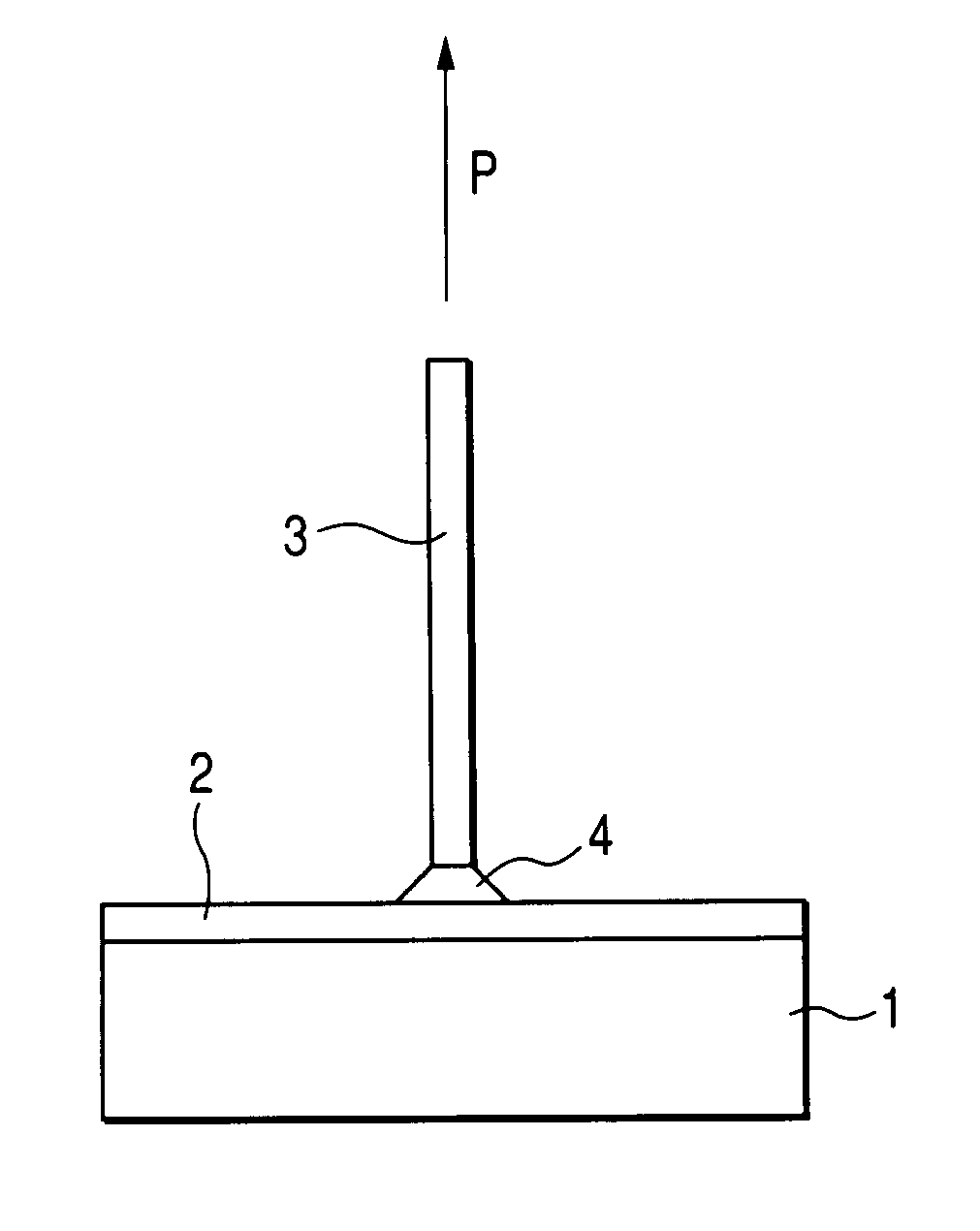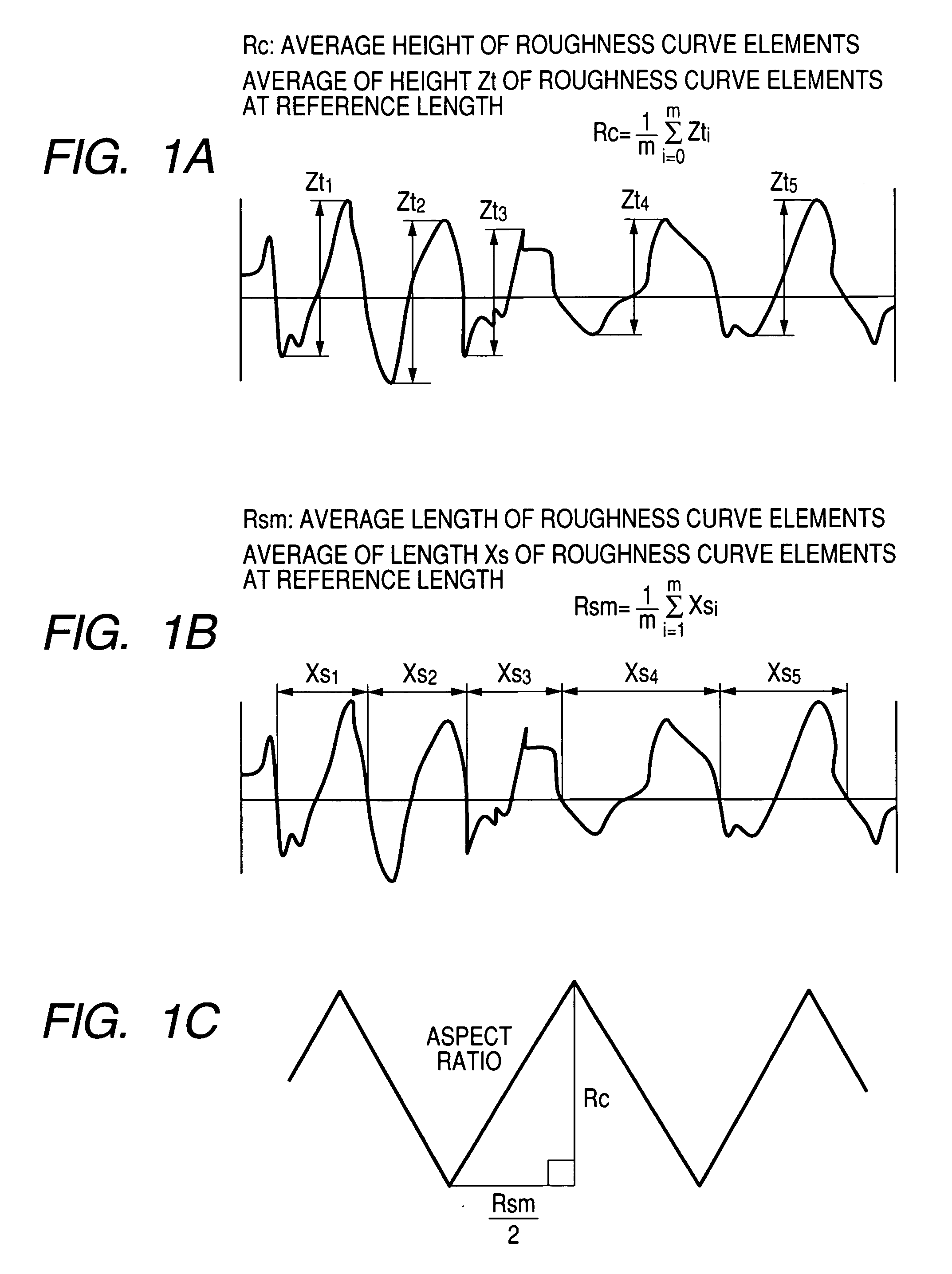Plasma resistant member, manufacturing method for the same and method of forming a thermal spray coat
a technology of plasma resistant and protective layer, which is applied in the direction of plasma technique, coating, natural mineral layered products, etc., can solve the problems of insufficient anchoring effect, defective products at the semiconductor production process, and high cost of plasma resistant ceramics, so as to prevent the occurrence of microcracks, prevent the exfoliation of plasma resistant protective layer, and high adhesion strength
- Summary
- Abstract
- Description
- Claims
- Application Information
AI Technical Summary
Benefits of technology
Problems solved by technology
Method used
Image
Examples
first embodiment
(Plasma Resistant Member)
[0054] A first embodiment of implementation of the present invention will be described hereinafter. In the plasma resistant member according to the present embodiment, the surface roughness Ra of the alumina base material is ranging from 5 μm to 15 μm, and a surface layer made of Y2O3 or YAG is formed on the roughened surface of the alumina base material, whereby the plasma resistance thereof can be improved. In the present embodiment of implementation of the present invention, the surface roughness Ra of the alumina base material falls within the above defined range, making it possible to predetermine the adhesion strength between the surface of the alumina base material and the surface layer of the plasma resistant member to 8 MPa or more. Whenever the surface roughness Ra of the alumina base material falls outside the above defined range, the adhesion strength between the surface of the alumina base material and the surface layer of the plasma resistant...
second embodiment
[0070] While the first embodiment has been described with reference to the case where the surface of an alumina base material is subjected to chemical etching or the like under relatively mild conditions to enhance the adhesion strength between the alumina base material and the surface layer made of Y2O3 or YAG, the surface of the alumina base material can be subjected to sandblasting or chemical etching under stronger conditions to render the alumina base material porous itself, making it possible to further enhance the adhesion strength between the two layers without raising the surface roughness thereof.
[0071] In some detail, the plasma resistant member according to the present embodiment is obtained by performing thermal spray Y2O3 or YAG onto an alumina base material. By using a porous surface layer of the alumina base material, which has a porosity of 20% or more and 60% or less to a depth ranging from 10 μm to 100 μm, it can enhance adhesion strength of the plasma resistant ...
examples 5 to 7
[0082] An alumina ceramic plate was prepared in the same manner as in Example 1 except that the etching conditions were as set forth in Table 2 below and annealing was effected at 1,700° C. for 3 hours. The alumina ceramic plate thus prepared was then measured for surface roughness, surface layer porosity, porous layer depth, aspect ratio and adhesion force. The measurement of adhesion force was performed in the same manner as in Example 1.
PUM
| Property | Measurement | Unit |
|---|---|---|
| surface roughness Ra | aaaaa | aaaaa |
| porosity | aaaaa | aaaaa |
| porosity | aaaaa | aaaaa |
Abstract
Description
Claims
Application Information
 Login to View More
Login to View More - R&D
- Intellectual Property
- Life Sciences
- Materials
- Tech Scout
- Unparalleled Data Quality
- Higher Quality Content
- 60% Fewer Hallucinations
Browse by: Latest US Patents, China's latest patents, Technical Efficacy Thesaurus, Application Domain, Technology Topic, Popular Technical Reports.
© 2025 PatSnap. All rights reserved.Legal|Privacy policy|Modern Slavery Act Transparency Statement|Sitemap|About US| Contact US: help@patsnap.com



